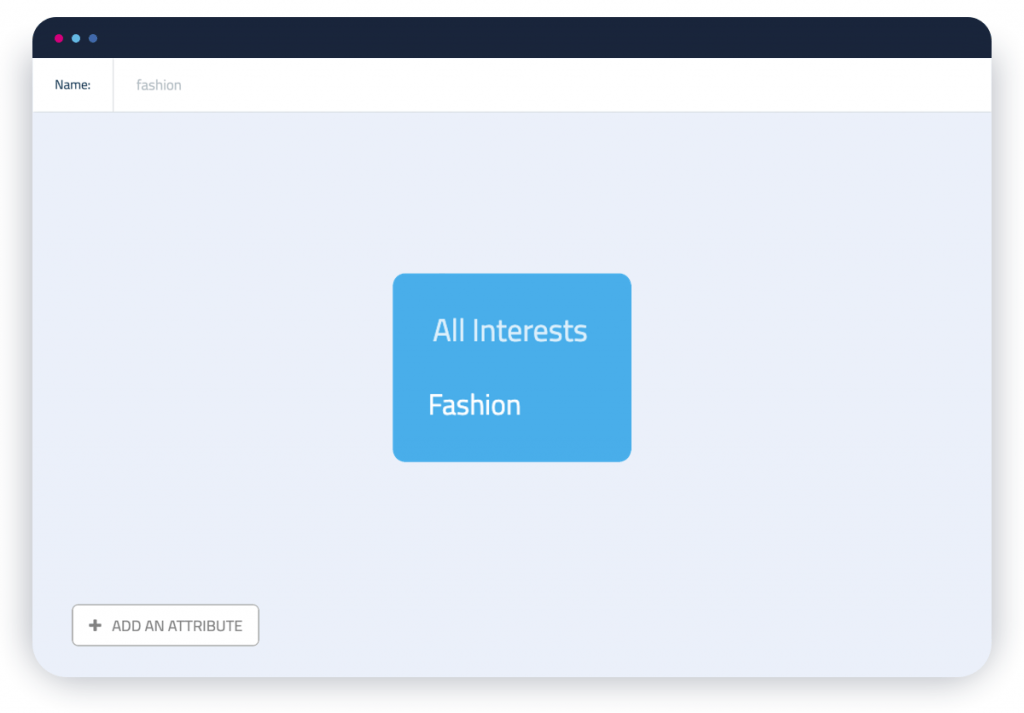A target persona should be personal – the clue is in the name.
The more detailed your persona, the clearer the picture of who the target audience is.
With this in place, marketers are better equipped with the insights needed to build an experience that consistently and efficiently speaks to them as individuals – with content that’s most relevant to them.
But not all personas are made equal.
For many marketing and research teams out there, target persona creation has been a box-ticking exercise based on a mix of behavioral data and guesswork, offering limited support to the overall strategy.
GlobalWebIndex removes the speculation around your target audience, giving you access to the wider psychographics aspects of their lives that play a crucial role in how and why they lean towards certain brands and products.
Here’s our easy step-by-step guide to defining your target personas in the platform.
Step 1: Create a new audience.
Before you detail who your audience is, you need to create it. Once you’re in the platform, you can create a new audience using the Audience Builder section of the platform.
If you already have a strong idea around who you want to target, simply create it fresh and give it a name – anything from fashionistas to affluent coffee drinkers.
If you don’t yet have a solid idea around who you want to target – try one of the pre-saved audiences.
Step 2: Add attributes to your audience.
An attribute is a single piece of information that we know about an someone.
But people aren’t one-dimensional.
Just knowing ‘coffee lovers’ love coffee isn’t enough to target them effectively. GlobalWebIndex allows you to combine any number and combination of attributes – including behavioral, regional and psychographic – to reveal the big picture.
Drill down into the data set and source relevant attributes (e.g. people interested in fashion). If you know the attributes you’re after already, use the ‘search’ function to find your data points faster.
Here’s how your audience should look now:
Now with your audience, you can click ‘add an attribute’ to layer over further behavioral, locational or psychographic information.
3. Limit the options on some data points.
When layering up your audience, some data points include a wide variety of different answer options, so it’s useful to be able to limit these only to the ones you need.
For example, our survey asks respondents to say how much they agree with the following statement: ‘I like to keep up with the latest fashions.’
The possible answers from respondents span from ‘strongly agree’ to ‘strongly disagree’.
But if we’re only looking to profile people who agree with the statement on any level, then you’d only want to select data points that reflect that.
Here’s how it should look:

4. Group your statements.
Grouping attributes like the above allows you to easily map out your statements in a visual and digestible way:
To do this, find your statement, then drag and drop it over another (or an existing group).
One of the benefits of grouping together statement is that you can tailor the logic (AND/OR) within that group.
In the image below, under the ‘attitudes and self-perceptions’ tab, you can see two statements combined by an OR logic.

5. Tailor your statements.
As you start to layer up your audience, you’ll notice that the default logic binding each attribute is an AND statement to narrow the pool down to people who possess both attributes.
But by changing this to an OR statement, you can include the full number of respondents in both groups.
Our count coding feature enables you to set a minimum number of options that a respondent must match with.
Click on the middle connector to toggle between the two options, then specify the number of the minimum number of attributes that the respondent should agree to. To do this, highlight the number and replace it with the desired one.
Here’s how it should look:

Turning your audience into a persona
Now you understand your audience from a commercial perspective, it’s time to uncover what matters to them as people.
To do this, place your audience against thousands of data points to uncover more about their online behaviours, media consumption habits and brand engagement, but also:
- Lifestyles: Do they have a lot of disposable income? Are they status-seekers? Are they thrill-seekers?
- Ambitions: Are they career or money motivated? Are they family-focused?
- Attitudes: What are their perspectives on certain brands? What’s their perspective on environmental welfare, human rights or the future of the economy?
This is where your audience really takes on a persona. With the detailed audience you’ve created, combined with a robust data set, you can test how your target market responds against the myriad of circumstances.
Case Study: Using target personas to tell a winning story
First & First is a consultancy that puts data at its core. The team does this to help brands and agencies bridge the gap between analytics and strategy, ultimately driving new business.
When faced with the task of supporting a small independent agency pitch for the launch of a new personal care brand, defining the personas was the first step.
The challenge
Filling in the gaps.
In response to their brief, First & First decided to put the customer at the heart of the strategy.
“We were tasked with providing a recommendation on who their target audience should be, offering insights into who they are and what they care about.” says Devon Zdatny, CEO of First & First Consulting.
With little information about the brand beyond the three core pillars it centered itself around, to do this pitch justice, they needed to understand the wider contexts surrounding their commercial behavior:
“We leveraged GlobalWebIndex to uncover which consumers would care about these pillars.
This helped us pinpoint and define our target audience.”
The action
Matching the right brand with the right audience.
GlobalWebIndex offers the most in-depth data on digital consumers across 46 countries, enabling the team to go as global or local as they needed to.
Using the wealth of survey data at their fingertips, they could identify, analyze and profile each target group using over 40,000 data points.
This meant not only delving into their demographics and behaviors, but their attitudes, perceptions and world views to build out the buyer personas.
To do this, they used a three step process:



“We found a lot of really interesting data points about this consumer, but ultimately we needed to decide: who is the person we are going to go after?”
Using the data gathered from their analysis, First & First sought to uncover the wider interests and perceptions of their audience. From this, they drew out key insights that could be brought into the personal care brands marketing strategy.
personal care brands marketing strategy.
Here’s what they found:
World views
- They’re 85% more likely than the general population to strongly agree that they’re interested in other cultures and countries.
Brand advocacy
- They’re 35% more likely to advocate a brands that they have a personal relationship with
Self perceptions
- They’re 192% more likely to describe their sexual orientation as ‘other’.
- They’re 108% more likely to describe their ethnicity as ‘other’.
- They’re 41% more likely to say they always strive to achieve more in life.
- They’re 32% less likely to say money is the best measure of success.
So this group is less likely to fall into prescribed social ‘boxes’ regarding gender or sexual orientation. They have strong ambitions, but money is not the measurement of this.
They’re keen on travel and open to learning about wider cultures, and brands that are able to foster personal relationships with this group will reap the rewards.
The result
Telling a winning story.
The agency won the pitch and as part of the kickoff hired First & First to conduct a segmentation study, heavily relying on GlobalWebIndex data.
“GlobalWebIndex has been core to our continuous efforts to streamline the path to insights,” says Devon.
Read the full case study here.
Wider context is everything
Building detailed, realistic audiences from data you trust takes buyer personas from a ‘nice-to-have’, to a central piece in contextualizing the commercial behaviors of your audience.
But the commercial landscape is changing. Creating your personas and leaving them to gather dust will reduce their value. It’s essential to keep them fresh and update them with the latest insight so they remain truly representative of who you’re trying to target.
GlobalWebIndex is updated quarterly, ensuring your buyer personas are steeped in data that’s current, relevant and as tailored to your audience as possible.
With the most complete and up-to-date understanding of your audience segments, how can your targeting be off point?

